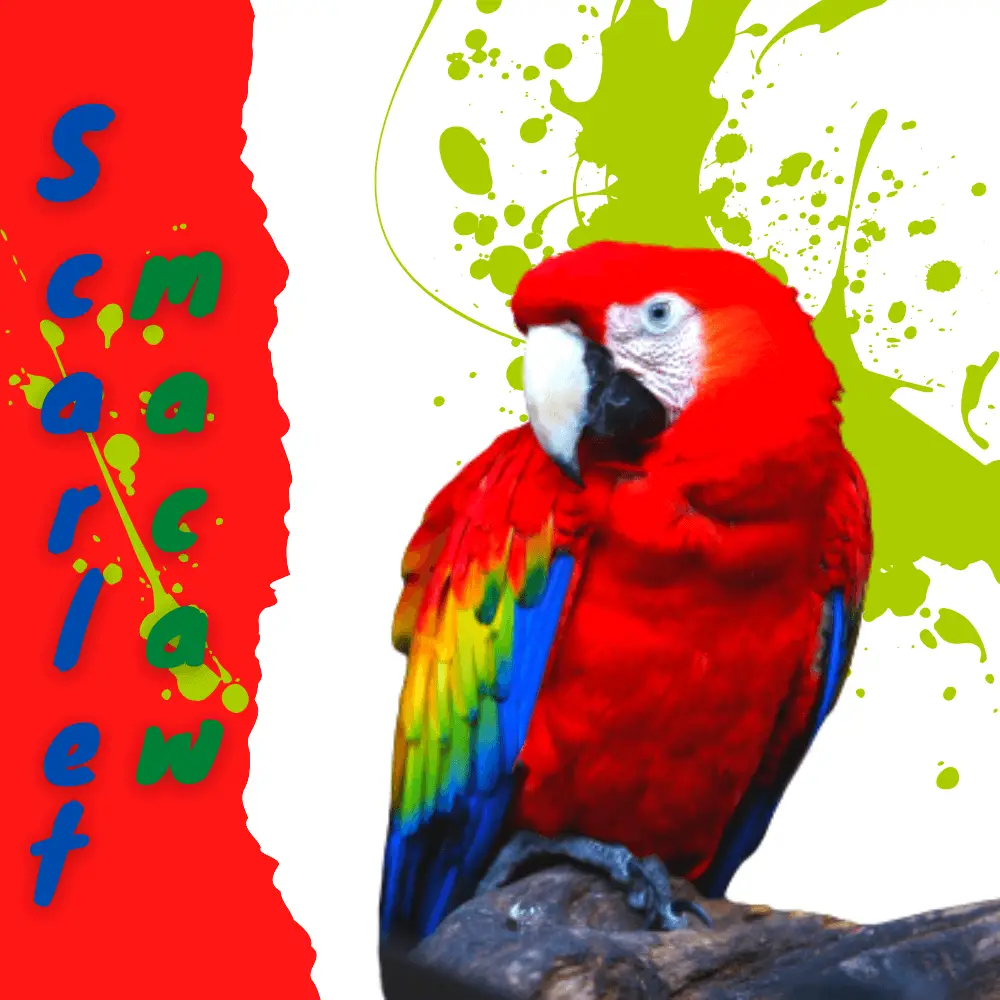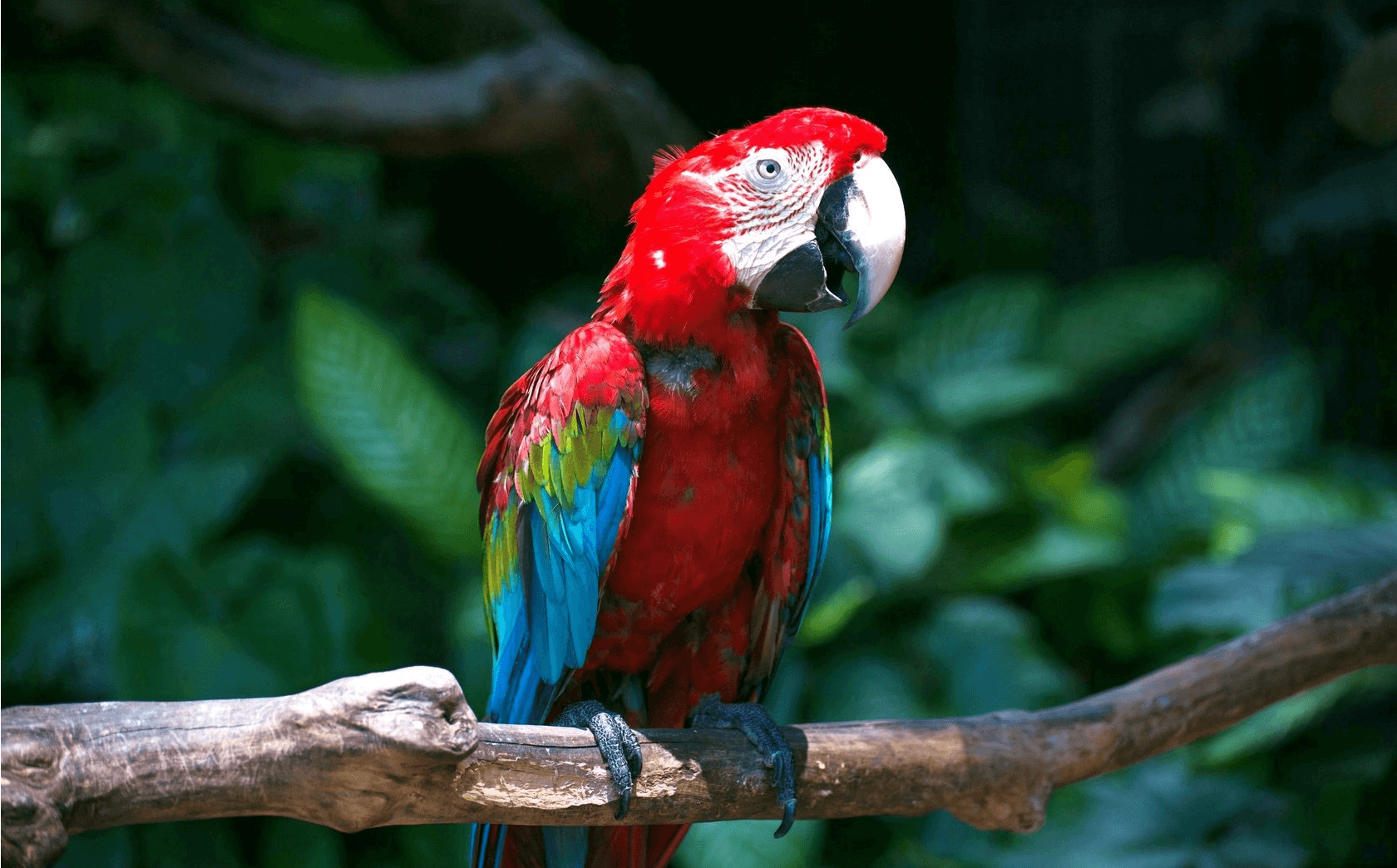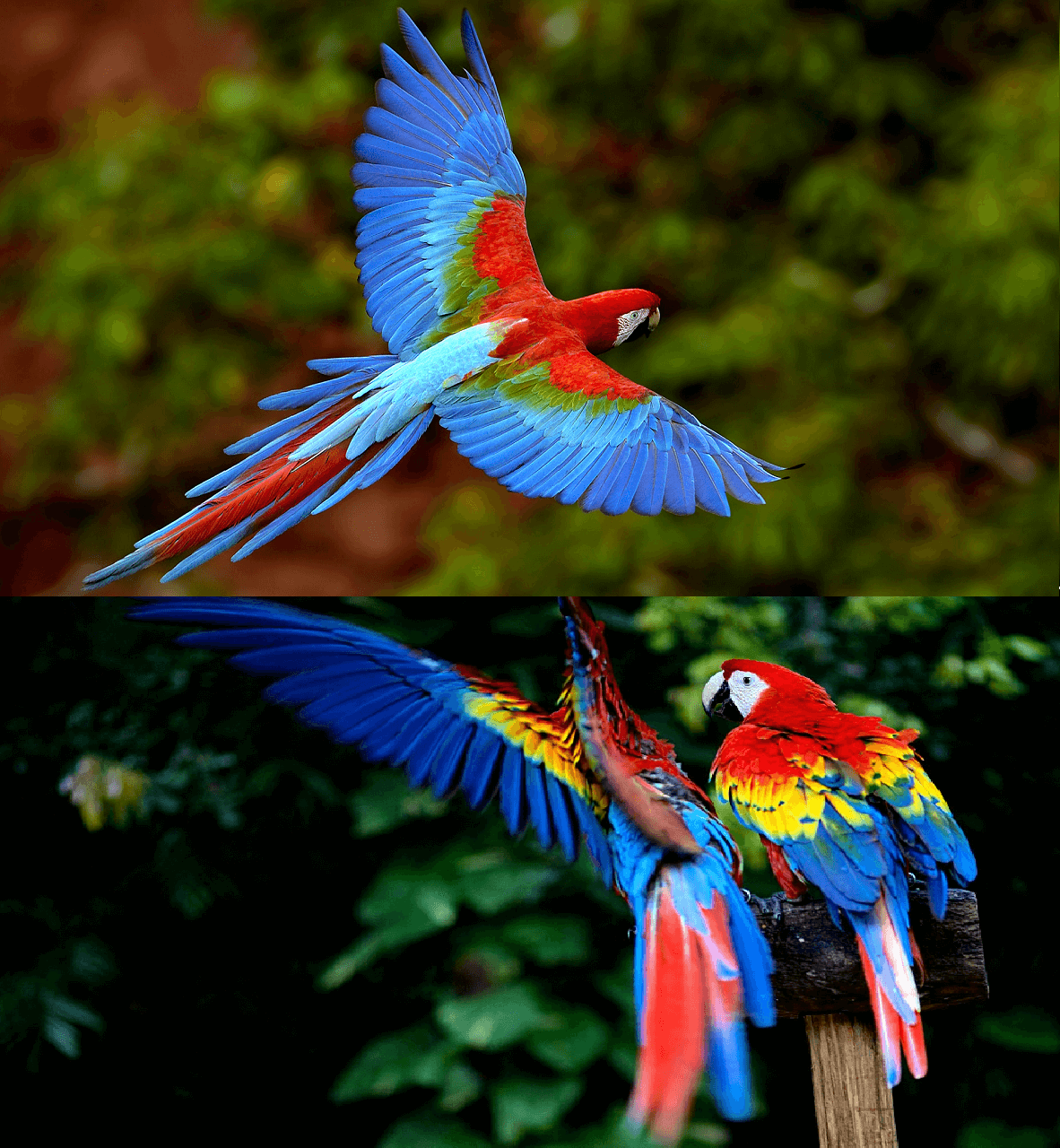
The Scarlet Macaw is a family bird Psittacidae, its scientific name is Ara Macao, and English is known as Scarlet Macaw. Popularly known as aracanga, Macau, ararapiranga, Macau, and small red macaw.
It is not considered rare or threatened with extinction, although it is no longer found in certain regions. Discover the most beautiful species of macaws.
Distribution of Scarlet Macaw
It can be found in Belize, Bolivia, Brazil, Colombia, Costa Rica, Ecuador, French Guiana, Guatemala, Guyana, Honduras, Guatemala, Guyana, Honduras, Mexico, Nicaragua, Panama, Peru, Suriname, Trinidad, Tobago, Venezuela, Porto Rico, USA, Europe, and Latin America.
Its habitat is in tropical, humid, or dry forests. You can live on the edges of the woods and in the open fields. Macaw also survives in urban wooded areas.

Physical characteristics of the Macaw
It is a bird considered to be large, measuring around 90 centimeters in length and weighing an average of 1.5 pounds. Its general plumage is red with green, blue, and yellow wings and white bare skin face. The eyes are white or yellow.
They have short legs and a long pointed tail. The wings are wide. The beak has white upper parts, while the lower part is black. It has a curved shape, and is very strong, managing to open very hard seeds.
The feet are zygodactyles, that is, they are two fingers forward and two fingers back, gray in color. Her nails are long and sharp, black in color.
Scarlet Macaw Behavior

Far from being shy, the Scarlet macaw needs to be in contact with humans and other species of birds, especially parrots of its kind. He is very sociable and affectionate: he constantly needs to communicate and be heard. It can happen to him to nibble, it is a way for him to communicate, this behavior is not aggressive. It can become aggressive only during the breeding season.
The scarlet macaw needs a lot of attention, it is not autonomous and needs interaction with its master or its congeners. Very attached to those around him, he can develop a form of separation anxiety if he feels more isolated than usual.
This parrot is sure to make you laugh with his unique attitude and the energy he exudes! The macaw knows how to imitate human gestures, sing, dance, raise its leg, shout… It imitates absolutely everything it can and pronounces many sounds which it assimilates very quickly.
Everything around a Scarlet Macaw is considered a toy: it has a constant need to play and have fun.
Scarlet Macaws take their medicine
SOURCE:John Downer Productions
Scarlet Macaw Diet
The Scarlet Macaw is vegetarian and eats mainly fruits and seeds. He particularly likes apples, bananas, and other fruits, as well as nectar and buds. Its beak allows it to very easily crack the shells of nuts, which is why you can give it whole.
Just like the cockatiel or the African grey parrot, its diet must be varied. It must consist of 60% complete feed in granules. You can offer him 30% millet in bunches and a Tropimix-type egg mixture.
Keep 10% to bring him fruits, vegetables, a little rice, or pasta. A diet that consists only of seeds may lead to obesity, cockatiels can suffer from a lack of calcium and vitamins. Tropicana and Tropimix mixtures are recognized and of good quality for parrots and parakeets.
Certain foods are deadly for macaws: avocado, parsley, and rhubarb are prohibited. Never give it a human diet based on prepared meals, sauces, sugars, meats, bread, meat, spices, milk… Macaws do not eat mealworms or insects.
Seed mixes
These mixtures constitute an exclusive mode of feeding and it becomes difficult to modify them. The scarlet macaw will refuse foods that are different, even if they are fruits or seeds that it would have found in its natural environment. A diet based solely on seed mixtures can lead to deficiencies in vitamins A, calcium, iodine, etc.
He can also sort the seeds and remove those that are beneficial. It is then necessary to privilege the granules to avoid this behavior of selective sorting.
If you opt for mixed seed food, always choose a high-quality mix accompanied by fruits and vegetables daily. Vitamin and mineral supplements are recommended. Learn more about bird feeding
The fruits
Fruits should be washed and dried, cut into small pieces. The peelings contain a lot of vitamins, so you can give them to your bird as long as you wash the fruit well. Many fruits (carrots, tomatoes, grapes, kiwis, apples, strawberries, bananas, pineapples, raspberries…) are appreciated by the Scarlet Macaw, i.e. almost all seasonal fruits and vegetables. You can incorporate soaked or sprouted seeds into the fruit preparation.
Scarlet Macaw lifespan
Scarlet Macaw Cage
The cage for a macaw parrot must have horizontal bars so that it can hang on the walls. The daily physical activity of a macaw being essential, it must be released as often as possible from its cage. Always place the aviary in a place where there is a lot of presence.
The environment of the macaw must be composed of toys, ropes, perches to allow him to occupy himself. It should be avoided that he maintains an exclusive relationship with those around him.
Do not hesitate to add fresh branches such as a log or olive tree so that he can use his claws and beak and have fun with them. At the bottom of the cage, use aniseed sand or 6mm beech chips.
The scarlet macaw likes to lie down in its nest every evening. It is important to always leave a nest of at least 50cm X 100cm x 50cm, and all year round.
Indoor macaws should be sprayed regularly with lukewarm water to maintain their smooth, shiny plumage.
Scarlet Macaw Price
the Scarlet Macaw cost between 200$ and 4000$
Macaw reproduction
They reach sexual maturity at 3 years of age and are monogamous. The reproductive period is between December and March. They usually nest in hollow trunks, often from dead trees, but also in natural cracks in rock walls. They lay an average of up to 3 eggs, are incubated for 22 to 34 days and during this period the female of the Macaw will be fed by the male.
The puppies are born on different days, without feathers, blind and defenseless. Both parents look after the litter and defend it from intruders. At three months of age, the baby macaw will leave the nest but will remain with its parents for some time, learning how to live in the forest. Its adult plumage is only achieved at the age of two.
Scarlet macaw
Scarlet Macaws – Costa Rica
SOURCE:Charlie Fayers




















